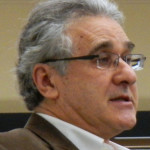Opinion: Monitoring drought, El Nino’s affect on Tahoe
Publisher’s note: This originally was published in the TERC newsletter and is reprinted with permission.
By Geoff Schladow
It seems that every conversation about Lake Tahoe this year made reference initially to the ongoing drought, and more recently to El Niño. What is certain is that we are in a long and historical drought. What is also certain is that there exists a band of very warm water across the equatorial Pacific Ocean – the condition known as El Niño. Whether the El Niño conditions will have a significant impact on the drought, particularly in the northern Sierra, is largely unknown.
Historical precedents are relatively few in number, and the data are divided between El Niño years when the northern Sierra received above average precipitation and years of below average precipitation. More certain is the likelihood that temperatures will be above average, increasing the chances of rain at the expense of snow, whatever the total precipitation may be.
What does all this mean for the lake? This year the lake fell to more than 18 inches below its natural rim. While that does not seem very much, the very low slopes in some parts of the lake meant that the water’s edge receded many hundreds of yards exposing brown mud and rocks, and shrubs started growing and flowering in previously submerged areas. With the lack of nutrients and erosion products washing into the lake, it has also been far clearer and bluer during the drought.
Will the lake refill this year? With an average precipitation year, the lake will rise slightly above the natural rim next spring, and the Truckee River will flow once more. With summer evaporation, however, the lake level will fall and the flow will cease. It will take more than one wet year to overcome the consequences of the drought.
Extreme events such as droughts can teach us a lot about our efforts to restore Lake Tahoe. During this period we have seen how many feet of clarity improvement are achievable in a single year; that the lake’s blueness is reflected in our ability to control nutrients; and that the attached algae on rocks has fallen to relatively low levels. While scientific measurements are recording these changes, it is the detailed research that we undertake that provides the understanding of what is driving change, and that understanding allows us to construct predictive tools that can guide future restoration. That understanding does not always come quickly or easily, but through the efforts of many we are moving forward.
To all who have contributed to our accomplishments this year, I am truly grateful. This includes our incredibly hard-working staff, our volunteer docents, the many students and interns that work at TERC, our partners in other research institutes and our colleagues in the various Tahoe agencies, those who visit our education centers, and those of you who have helped fund our research and education programs and partnered with us in unique ways.
I wish you all a safe and peaceful holiday season, and look forward to hearing how the lake refilled far quicker than I predicted.
Geoff Schladow is director of the UC Davis Tahoe Environmental Research Center.
